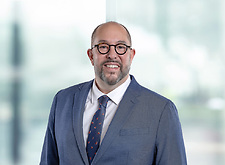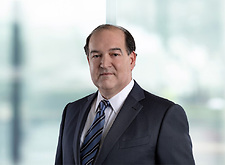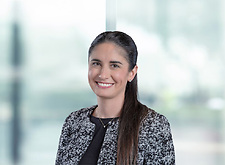USDOL Revamps COVID-19 Leave Rule After Court Loss
On Friday, September 11, 2020, the U.S. Department of Labor (“USDOL”) issued new regulations for the Emergency Paid Sick Leave Act (“EPSLA”) and Emergency Family and Medical Leave Expansion Act (“EFMLEA”). These two Acts are key provisions of the Families First Coronavirus Response Act (“FFCRA”), the federal law that provides emergency relief and support to employees who need to be absent from work due to COVID-19 related reasons. The USDOL issued the new regulations, which take effect on Wednesday, September 16, 2020, in response to a recent decision by Judge Paul Oetken of the United States District Court for the Southern District of New York that vacated certain portions of USDOL’s prior regulations implementing EPSLA and EFMLEA (read our previous alert on this topic here). The key takeaways from the new regulations are summarized below.
Work Must Still be Available for an Employee to Take Leave
In its prior rule, USDOL indicated that EPSLA and EFMLEA leave are available only where the employer has work available for the employee to perform (e.g., the employee is expected or scheduled to work on the day(s) for which he or she is seeking to use leave). The District Court struck down this requirement, taking issue with the USDOL’s “barebones” explanation for the requirement.
The new rule reaffirms the requirement that employees may take FFCRA leave only if work is otherwise available to them. In reaffirming this requirement, USDOL explained that the purpose of the EPSLA and EFMLEA was to discourage potentially infected employees from reporting to work. If there is no work available, there is no need to discourage such employees from going to work. USDOL also explained that its requirement that work be available is consistent with the general understanding of the term “leave” as an excused absence from work, as well as the manner in which traditional FMLA has been interpreted and applied.
Definition of “Health Care Provider” – New Definition
Under the EPSLA and EFMLEA, employers may bar employees who are “health care providers” or “emergency responders” from taking leave. In its prior rule, USDOL adopted an exceptionally broad definition of the term “health care provider,” which Judge Oetken struck down as untethered from the statutory text. In response, the new rule defines “health care provider” as:
- Any employee who is a health care provider under the existing FMLA regulations (this includes doctors of medicine and osteopathy, podiatrists, dentists, clinical psychologists, optometrists, chiropractors, nurse practitioners, nurse-midwives, clinical social workers, physician assistants, certain Christian Science practitioners, and other providers from whom the employer or its group health plan’s benefits manager will accept certification of a serious health condition for purposes of substantiating a claim for benefits);
- Any other employee who is capable of providing diagnostic, preventative, or treatment services; and
- Any other employee who is capable of providing other services that are integrated with and necessary to the provision of patient care and, if not provided, would adversely impact patient care.
USDOL indicates that whether an employee qualifies under this new, more limited definition will be a fact-specific analysis based on the duties the employee performs. The regulations specifically identify several examples of the types of employees who qualify, including:
- nurses, nurse assistants, medical technicians, and others directly providing diagnostic, preventive, treatment, or other integrated services;
- employees providing such services “under the supervision, order, or direction of, or providing direct assistance to” a health care provider; and
- employees who are “otherwise integrated into and necessary to the provision of health care services,” such as laboratory technicians who process test results necessary to diagnosis and treatment.
By contrast, workers who do not actually provide health care services, even if their services could affect the provision of health care services, may not be excluded from taking EPSLA and EFMLEA leave. This includes IT professionals, building maintenance staff, human resources personnel, cooks, food service workers, records managers, consultants, and billers.
Employer Consent Required for Intermittent Leave, but “Intermittent” is Defined a Bit Differently for School Closure Leave
USDOL’s prior rule allowed an eligible employee to take EPSLA and EFMLEA on an intermittent basis when his or her child’s school or place of care was closed or unavailable due to COVID-19, but only with the employer’s consent. The District Court vacated this requirement of employer consent, finding that USDOL did not offer an appropriate justification for it.
In its new rule, USDOL reaffirms the prior consent requirement and offers further justification for this requirement. Specifically, USDOL noted that, unlike traditional FMLA, the EPSLA and EFMLEA do not expressly address intermittent leave, which USDOL views as Congress affording it broad authority to issue regulations filling this statutory gap. USDOL also reasoned that under traditional FMLA, intermittent leave is permitted only for certain qualifying reasons (e.g., where such leave is medically necessary) or where the employer and employee agree to intermittent leave (e.g., bonding leave following birth or placement of a child). In the COVID-19 context, the USDOL noted that the EPSLA and EFMLEA should balance the employee’s need for leave against the employer’s interest in avoiding work disruptions. In this regard, the USDOL viewed the new leave as most akin to an employee taking intermittent FMLA leave following the birth or placement of a child, and therefore, reaffirmed its requirement that employees must obtain their employer’s consent prior to taking EPSLA or EFMLEA leave on an intermittent basis.
Critically, however, USDOL now appears to define intermittent a bit differently when an employee’s child participates in hybrid learning in which schools operate on adjusted or alternating schedules. According to USDOL, each school closure under a hybrid model “constitutes a separate reason for . . . leave that ends when the school opens the next day.” In other words, intermittent leave is not necessary (and therefore neither is the employer’s consent) where the school literally closes and opens repeatedly. So, for example, an employee does not need to take intermittent leave (and thus does not need employer’s approval) to take off Tuesday and Thursday due to his or her child’s school closure, because each day is a separate school closure entitling the employee to leave. The same reasoning applies to longer and shorter alternating schedules, such as where an employee’s child attends in-person classes for half of each school day or where the employee’s child attends in-person classes every other week and the employee takes leave to care for the child during the half-days or weeks in which the child does not attend classes in person. So in the school/childcare closure context, the USDOL regulations take the position that intermittent leave is applicable (and employer consent is required) only where an employee seeks leave for a portion of the time that his or her child’s school or place of care is closed.
Documentation Requirements – Now “As Soon As Practicable”
USDOL’s prior rule required employees to provide documentation supporting the need for leave “prior to” taking leave. The District Court upheld the documentation requirement, but invalidated the requirement that such documentation be provided in advance.
USDOL’s new rule indicates that workers must provide documentation, consisting of their name, the date(s) for which leave is requested, the qualifying reason for the leave, and an oral or written statement that the employee is unable to work because of the qualified reason for leave, “as soon as practicable.” However, the rule also indicates that, in most cases, “as soon as practicable” will be when the employee provides notice of the need for leave. Where an employee seeks EFMLEA leave to care for a child whose school or place of care is closed, USDOL confirmed that the employee must provide the employer with notice of leave as soon as practicable under the circumstances. And where EFMLEA leave is foreseeable (e.g., employee learns in advance that school will be closed), USDOL anticipates that employees will ordinarily be able to provide notice before taking leave.
Implications and Next Steps
Employers may understandably be feeling some whiplash due to the court decision a few weeks ago and now the new USDOL rule. While the new rule provides some clarity on unanswered questions resulting from Judge Oetken’s decision, it is not certain what will come next. USDOL could still appeal the District Court ruling to the United States Court of Appeals for the Second Circuit and it seems probable that there will be renewed challenges to the USDOL’s latest iteration of these regulations. Either of these steps could result in the USDOL publishing further guidance or regulations in response.
In view of these developments and this ever changing landscape, employers should consult with experienced employment counsel regarding options for moving forward. For assistance, please contact Lura Bechtel, John Godwin (716.848.1357), Charles H. Kaplan (646.218.7513), or any other member of our Labor & Employment Practice.
Featured
- Partner
- Partner
- Partner
- Senior Associate
- Partner
- Partner
- Partner
- Partner
- Partner
- Partner
- Partner
- Partner
- Partner
- Partner













